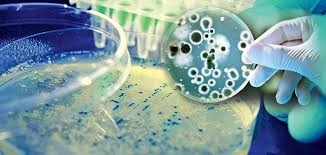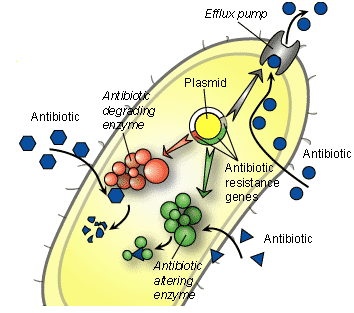Some of the main sources of contamination in the course of production in a food or pharmaceutical company, and the areas of good manufacturing practice (GMP) that centers on controlling all possible sources of microbial contamination of pharmaceutical and/or food products during manufacturing include but not limited to the control of air, raw materials, water, personnel, equipment and packaging processes.
- Control of raw materials: The raw materials for the manufacturing of a pharmaceutical product or food could be a great source of microbial contamination during production if appropriate measures are not taken to avoid the possible pollution that they may impart during production or manufacturing. Some of the major raw materials used for the manufacture of pharmaceutical products include adjuvants, active ingredients, excipients, packaging materials, diluents, oils, gums, extracts from herbs/plants and starches are important sources of contamination during production. It is vital to ensure the proper storage of these raw materials and others in places where microbial contamination is lowest or eliminated. And even though microbial contamination may be present in the places where these raw materials are stored, it is also important to put in place measures that will prevent or discourage the indigenous microflora of the store room from growing. Proper sterilization techniques should be carried out on all raw materials (depending on their heat-labile nature); and those raw materials found to be contaminated should be excluded from the production and replaced with raw materials that have least contamination if possible. The raw materials used for the manufacturing of pharmaceutical products must be found to be of the right quality and free from heavy microbial contamination prior to their usage.
- Control of water: Water is a natural and universal solvent that is important for the sustenance of life including microbes. Water is used for various processes during manufacturing including washing of raw materials and equipments, and water is also used for the preparation of the constituents used for compounding the finished products. The water used for the manufacturing of pharmaceutical preparations must be found to be of good quality and free from feacal, chemical or microbial contamination. Water meant for manufacturing should be properly sterilized or treated to reduce its microbial load to the minimal level deemed fit for the process before it can qualify to be used for production.
- Control of air: Microorganisms are ubiquitous and they are also found in the air. The air is another major source of contamination in a pharmaceutical or food production industry. Spore forming microbes including bacteria and fungi are constantly found in the air; and when the air supply to a pharmaceutical or food manufacturing plant does not take air-contamination into consideration during production, it could be another source of pain to them in terms of the contamination of their finished products. The air supply to the manufacturing rooms should be properly controlled using air filters or other sustainable measures to ensure the supply of microbial-free and quality air to the manufacturing areas in the manufacturing plant. The manufacturing areas should be properly fitted with air conditioners (and not fans that raises dust within the manufacturing rooms) – which keeps away dust particles and insects from the manufacturing rooms.
- Production personnel: The personnel in a pharmaceutical or food production industry may be a great source of contamination if their activities are not controlled and well-guided. Manufacturing personnel who do not adhere strictly to personal hygiene practices as well as to other environmental hygienic practices of the company may become a great source of microbial contamination to the manufacturing process. The body of humans is inundated with a wide variety of microbes; and these microorganisms could easily be transferred to the finished product or raw materials during the production of the products. When manufacturing personnel’s fail to wear the proper protective clothing or wears during production, their bodies serve as routes via which microbes reach and contaminate the finished products. Other personal reflex actions such as coughing, sneezing and even talking during production or coupling of the finished product are common unhygienic practices that are common amongst manufacturing personnel’s, and which if not controlled could lead to a great deal of microbial contamination of the entire production process. As a good manufacturing practice, manufacturing personnel’s who are seriously or mildly (and asymptomatic of a particular disease) sick should not be allowed access into the manufacturing rooms; and manufacturing personnel’s should always ensure that they are wearing the proper clothing and/or wears during production and while within the manufacturing areas.
- Equipment: Equipment is another source of contamination of pharmaceutical preparations. There are several types of equipment available for the production of pharmaceutical products, cosmetics and food. But the important aspect of avoiding contamination in the use of this equipment is to always ensure their proper sterilization and/or cleaning prior to their usage. The equipment should be properly cleaned using water and detergent. Some equipment has holes where raw materials and/or the finished product (prior to packaging) hides, and are free from removal during cleaning. Microbes find their way into such orifices or holes – where they thrive and cause serious contamination of the finished products. It is vital that these aspects are taken into consideration during the cleaning or washing of the equipment – so that they do not serve as sources of contamination to the manufacturing process.
- Manufacturing premises and buildings: The location of a food or pharmaceutical manufacturing plant has a huge impact on the entire manufacturing process going on in such a facility. A good manufacturing facility should have different rooms that handles different operations; and its location should be in places where there is minimal or no outside contamination such as inflow of contaminated air. The manufacturing facility should be amenable to proper cleaning and disinfection during environmental sanitation; and its ceilings and walls should be fitted in such patterns that do not hamper cleaning.
- Packaging: Packaging is another important aspect of a good manufacturing practice that should always be considered to limit microbial contamination of the finished product. Materials for packaging should have very little or no negative effect on its content (i.e. the finished product); and it is also vital that the packaging materials used for each finished product must be found to be reliable for the product – especially as it helps to limit the infiltration of microbes from the environment into them.
References
Arora D.R (2004). Quality assurance in microbiology. Indian J Med Microbiol, 22:81-86.
Ashutosh Kar (2008). Pharmaceutical Microbiology, 1st edition. New Age International Publishers: New Delhi, India.
Axelsen P.H (2002). Essentials of antimicrobial pharmacology. Humana Press, Totowa, New Jersey, USA. Al-Jasser A.M (2006). Extended – Spectrum Beta – Lactamases (ESBLs): A Global Problem. Kuwait Medical Journal, 38(3):171-185.
Bisht R., Katiyar A., Singh R and Mittal P (2009). Antibiotic Resistance – A Global Issue of Concern. Asian Journal of Pharmaceutical and Clinical Research, 2 (2):34-39.
Block S.S (2001). Disinfection, sterilization and preservation. 5th edition. Lippincott Williams & Wilkins, Philadelphia and London.
Nally J.D (Ed.) (2007). Good manufacturing practices for pharmaceuticals. Sixth edition. Informa Healthcare USA, Inc, New York.
Discover more from Microbiology Class
Subscribe to get the latest posts sent to your email.





